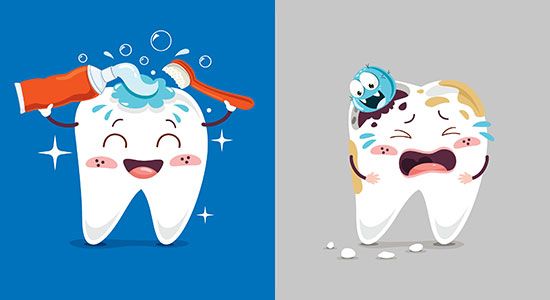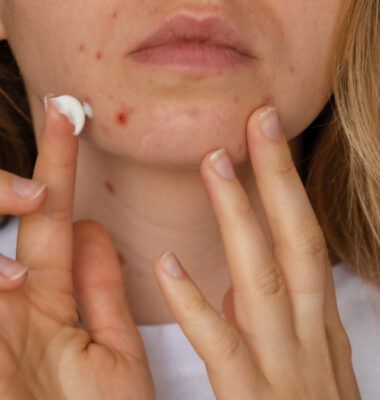Can Teeth Cavities be Reversed? Debunking Myths and Exploring Possibilities
Fact checked
By Lily Duffy, BDS, MRes, MPaed, NHS Leadership Fellow
Last Updated on October 23rd, 2023 / Published on September 13, 2023

If you are experiencing constant toothaches or dealing with cavities, you are not alone. More than 2 billion people worldwide suffer from dental cavities.1 The good news is you can prevent further pain and cavities with the correct information.
In this article, you will discover more about cavities, how they develop, and what you can do to prevent them.
What are Teeth Cavities?
Cavities are holes in teeth caused by the acid bacteria produce in your mouth.
The acid softens your tooth’s hard outer shell, known as the enamel. Softening of this layer leaves it open to breakdown.2
Teeth with cavities can be sensitive, painful, sharp, and taste bad.
How do you know if you have a cavity?
In the early stage, a tooth cavity is unlikely to produce any symptoms, so you may not realize you have a cavity.
As your tooth begins to break down and the cavity gets bigger, you may experience symptoms. These can range from mild sensitivity to constant throbbing and toothache.3
When do cavities start to hurt?
A cavity will feel very painful when the tooth decay reaches the pulp’s nerves.
It feels different for different people but is usually a constant painful ache.3 It may feel like your tooth is throbbing, or the pain is radiating around your jaw and face.
How Teeth Cavities Affect Your Overall Health
You may think that a tooth cavity only affects the tooth. However, the opposite is true. The bacteria that cause teeth cavities can spread elsewhere in your body.
Can cavities cause other health problems?
Tooth decay and its associated health problems all stem from the same cause – bacteria. The bacteria found in teeth cavities are also found in health issues such as gum disease, heart inflammation, breathing infections, and bone infections.4
Harmful oral bacteria can spread throughout your body via the bloodstream or breathing system.4 This increases the bacteria in these areas and can cause a medical condition or worsen an existing one.
Common Myths About Teeth Cavities
Several well-known facts about oral hygiene and tooth decay are a myth. Let’s delve deeper into these.
Myth: Sugar is the Only Cause of Cavities
Oral bacteria eat and metabolize sugar, producing harmful acids as a result.4 This acid is what softens the teeth and causes decay. Yet, other things can trigger this process or make it more likely.5 Some other causes of cavities include:
- Plaque: Plaque is a sticky coating consisting of food debris and bacteria. Not cleaning the plaque off your teeth increases the chance of decay as bacteria can thrive on the tooth surface.
- Lack of fluoride: Fluoride is a mineral that helps strengthen teeth. It gets incorporated into the tooth’s outer surface, making it more resistant to bacteria.
- Dry mouth: Certain medications, medical conditions, and radiotherapy cause a lack of saliva. Saliva helps neutralize bacterial acids and wash away food debris.
- Other acids: Like the acids produced by bacteria, other acids can similarly affect your teeth. These include dietary and stomach acids, like those produced by gastric reflux or vomiting.
Myth: Cavities Can Heal Themselves
Cavities cannot heal themselves, but excellent toothbrushing and cutting down on sugar can help stop them from getting worse.5
Myth: Only Children Get Cavities
Children have primary (or first) teeth and lose these over time to develop permanent (or adult) teeth.
Both types of teeth have a similar chance of developing tooth decay. Worldwide, decay affects 46% of primary teeth and 52% of permanent teeth.6
Children and cavities
Children’s teeth are more susceptible to cavities developing between teeth. This is because of the shape and design of primary teeth.7 Food gets trapped between teeth and can be hard to remove.
Adult teeth cavities
Adults are more prone to developing decay in the pits and fissures of their teeth. Food collects in these areas, and is more difficult to remove.7
Can Cavities Be Reversed or Halted?
You will now learn more about how to try to prevent cavities from spreading further into the tooth.
The Scientific Perspective
Stopping acid production, removing the bacteria, or removing the bacteria’s food source can all help to stop the progression of decay.8
Excellent oral hygiene and a diet that is not too high in sugary foods and drinks also help stop tooth decay from getting worse.
Can teeth cavities be reversed?
Cavities range from small brown patches to black lesions and big holes in teeth. Reversing the damage done by a cavity is not possible, but with good oral health, we can prevent it from spreading.8
Restoring and improving the appearance of a cavity can only be done with dental intervention such as a filling.
Natural Remedies for Teeth Cavities and Their Effectiveness
You might be a fan of a natural approach to healthcare and like to avoid using certain chemicals and interventions.9 But can cavities be halted naturally?
Some literature suggests natural remedies such as oil pulling and licorice root can prevent decay. However, there is no scientific evidence to support any of these, and they should not replace practices recommended by your dentist.9
What Dentists Recommend for Preventing Cavities
Your dentist will recommend the best course of action to prevent cavities from worsening. Dentists use different sources to get this information and support this with scientific evidence.10
Your dentist might first discuss how you can prevent tooth decay from developing.10 They may also provide treatment to restore the damage caused by tooth decay and stop it from worsening.
Dentist-Recommended Preventative Measures and Treatments
Fluoride and cavities
Fluoride gets combined with other minerals within the enamel surface, making it stronger.10 The combination of fluoride and minerals makes it harder for bacterial acids to affect the tooth and helps prevent tooth breakdown.
Diet and Oral Health
The best way to prevent cavities is to follow good oral hygiene practices and limit sugars in your diet.10 Good oral hygiene routines include the following:
- Toothbrushing: Brush your teeth twice a day with fluoride-containing toothpaste. For ideal care, you should also use dental floss to clean in-between teeth.
- Mouth rinsing: Use this at a different time (not right after toothbrushing) to remove food debris.
- Regular dental care: Your dentist will recommend regular check-ups and any treatment needed.
- Fissure sealants: A sealant is a protective coating applied to the chewing surface of back teeth. Children with high decay risk should have sealants placed on their first adult molars.
- Avoid frequent snacking: If you snack or drink throughout the day, your teeth do not have a chance to recover from bacterial acid attacks. This makes them more prone to decay.
- Eat tooth-healthy foods: Avoid sticky foods or foods high in added sugars, like soda drinks and sweets. Foods such as fresh fruit are okay, as chewing stimulates saliva that helps protect the teeth.
- Fluoride treatment: Your dentist may apply fluoride varnish to help you stay on top of your oral health.
Dental Procedures for Treating Cavities
The following are procedures dentists recommend for treating cavities11:
- Amalgam filling. Amalgam is a silver metal that contains mercury. It is strong and long-lasting.
- White filling. White composite fillings are more desirable, particularly in more visible areas. Composite is a type of plastic resin molded into the shape of your natural tooth.
- Dental crown. A dental laboratory fabricates dental crowns in a ceramic or composite material. A dental crown sits like a hat on top of the decayed tooth. This helps restore the original strength and structure.
Takeaway
Children’s and adult teeth are all susceptible to decay and cavities. For this reason, good oral hygiene is essential.
Preventing cavities comes down to more than just good toothbrushing. Excellent oral care includes fluoride, fissure sealants, regular dental check-ups, and limiting sugary foods and drinks.
If you develop a cavity, there are ways to try and stop it from progressing into the tooth. This includes using fluoride and fillings to help fix the hole.
With this advice, you can maintain a healthy mouth and oral environment for many years to come.
Sources
- World Health Organisation. (2022). Global oral health status report: towards universal health coverage for oral health by 2030. Www.who.int.
- Hummel R, Akveld NAE, Bruers JJM, Van Der Sanden WJM, Su N, Van Der Heijden GJMG. Caries Progression Rates Revisited: A Systematic review. Journal of Dental Research. 2019;98(7):746-754.
- Edwards DG, Bailey O, Stone S, Duncan HF. How is carious pulp exposure and symptomatic irreversible pulpitis managed in UK primary dental care? International Endodontic Journal. 2021;54(12):2256-2275.
- Sabharwal A, Stellrecht E, Scannapieco FA. Associations between dental caries and systemic diseases: a scoping review. BMC Oral Health. 2021;21(1).
- Silveira, A. B. V. da ., Miranda Filho , A. E. de F., Marques, N. C. T. ., & Gomes, H. de S. . (2021). What risk factors determine tooth caries today? A scoping review . Research, Society and Development, 10(7)
- Schmoeckel J, Goršeta K, Splieth CH, Jurić H. How to Intervene in the Caries Process: Early Childhood Caries – A Systematic Review. Caries Research. 2020;54(2):102-112.
- Kazeminia M, Abdi A, Shohaimi S, et al. Dental caries in primary and permanent teeth in children’s worldwide, 1995 to 2019: a systematic review and meta-analysis. Head & Face Medicine. 2020;16(1). doi:10.1186/s13005-020-00237-z
- Urquhart O, Tampi MP, Pilcher L, et al. Nonrestorative Treatments for Caries: Systematic Review and network Meta-analysis. Journal of Dental Research. 2018;98(1):14-26.
- Woolley J, Gibbons T, Patel K, Sacco R. The effect of oil pulling with coconut oil to improve dental hygiene and oral health: A systematic review. Heliyon. 2020;6(8):e04789.
- Davies G, Davies R. Delivering Better Oral Health – An Evidence-Based Toolkit for Prevention: A Review. Dental Update. September 2008.
- Prevention and management of dental caries in children: dental clinical guidance. Dundee (UK): Scottish Dental Clinical Effectiveness Programme; 2018: https://www .sdcep.org.uk/media/2zbkrdkg/sdcep-prevention-and-management-of-dental-caries-in-children-2nd-edition.pdf.





